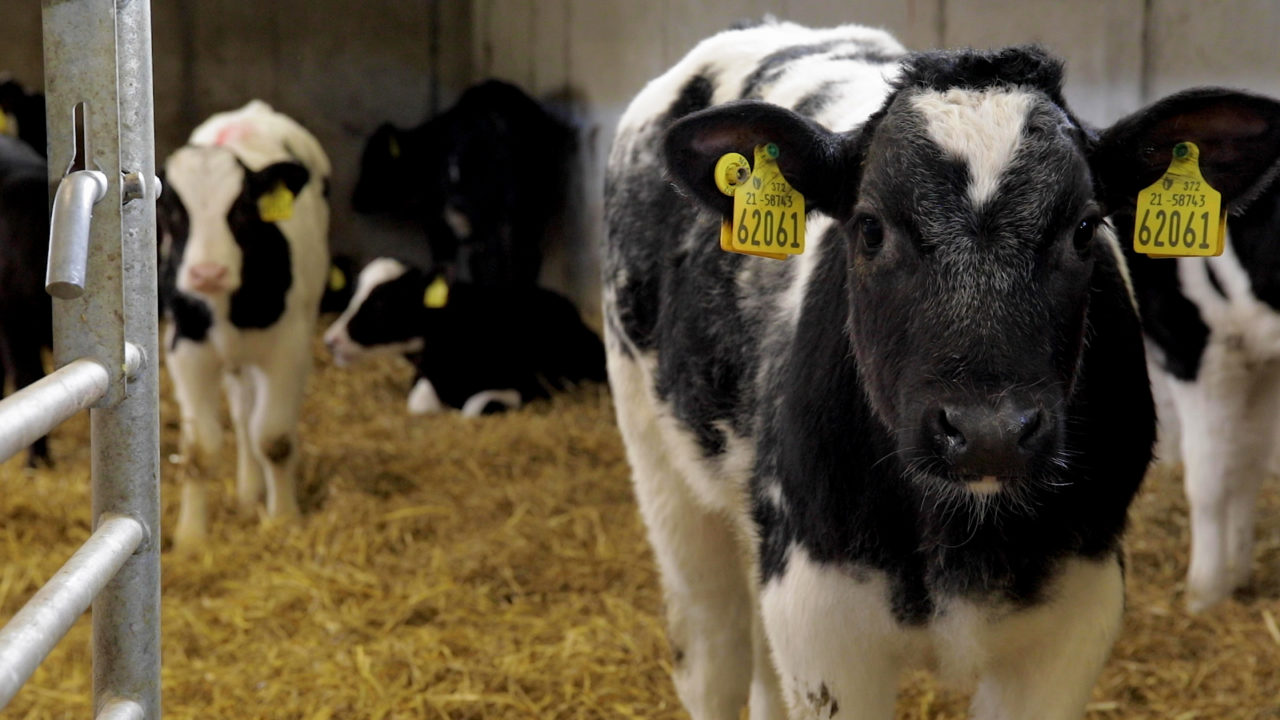By Teagasc Green Acres programme advisor James Fitzgerald
Farming just outside Claremorris, Co. Mayo, Jarlath and Austin Ruane operate a calf-to-beef system rearing spring-born calves, bringing them through to slaughter at 21-30 months-of-age. This system runs alongside a flock of 55 mid-season lambing ewes.
This is their second year of rearing 60 Angus, Holstein Friesian and Limousine spring born calves on an automatic feeder, a change from the more traditional milk feeding methods used in years previous.
Starting at source
The way in which the Ruane’s source their calves has changed since their enrolment in the Teagasc Green Acres Calf to Beef Programme. In past years, Jersey cross calves were sourced directly from dairy farms as well as Angus and Hereford calves sourced from the south of the country, through marts and dealers.
This sourcing method resulted in some health issues in the calf rearing stages, due to calves being sourced from a high number of different herds. Since then, Jarlath and Austin have been focusing on buying calves directly from local dairy farms.
This had the result in reducing the number of herds calves were sourced out of, from 26 herds in 2019 to four herds in 2021 – which has helped to reduce the calf health problems over the rearing period.
While improvements in calf health have been seen since the changes in sourcing strategy, there is still room for improvement. It was noticed during this year’s calf rearing season that the more troublesome calves tended to be ones that were younger at their time of arrival on farm.
Due to this, it is decided that when calves are being sourced next spring, no calves will be purchased that are less than three-weeks-old.
Going direct to farm in order to source calves has given the Ruanes a better opportunity to source calves with the genetics capable of improving their farm profits. Since joining the programme there has been a move away from sourcing Jersey cross calves in favour of Holstein Friesian calves, which will increase the carcass weight at slaughter per bullock and increase the overall output of the farm.
The last of the Jersey cross bullocks will be coming fit for slaughter off-grass in the next two months. They are expected to match the carcass weight returned from previous years Jersey cross cattle, 295kg cold weight at 30 months old.
The Holstein Friesian bull calves that Jarlath and Austin have been rearing over the last two springs have the potential to return an extra 60-70kg carcass weight above that of the Jerseys, without a drastic increase in calf purchase or input costs.

Small tweaks and tight margins
Keeping control of variable costs while operating a high stocking rate is the key to the Ruanes reaching the €500/ha net margin set for Green Acres farms.
In efficiently ran farms that are keeping their cost of production in check, variable costs amount to about 50% of the total output. In 2019, the variable costs for their farm amounted to 64% of the total output.
This was partly due to the lower output per head seen from the lighter carcass weights the Jersey cross cattle left, while incurring the full cost of bringing an animal through to slaughter at 30 months.
In 2020, the variable costs were reduced to 61% of gross output. While this is a step in the right direction it is not yet in line with the 50% targeted, and is a major factor preventing the farm from reaching its €500/ha net margin target – although the €308/ha net margin recorded in 2020 was still impressive in its own right.
Due to the high output of the farm, trimming the variable costs of the system back to 55% will be enough to generate a net margin of €429/ha, with all other factors held equal.
Then ensuring that all cattle reach their target carcass weights (315kg for 21-22 month slaughter and 360kg for under 30 month slaughter) will ensure that the net margin of the farm reaches the €500/ha target.
Beef prices are another critical factor that influence the profitability of calf-to-beef systems, with fluctuations capable of increasing or decreasing the net margin of the farm to a great extent. The above figures are based on a beef base price of €3.75/kg with quality assurance, grading and breed bonuses taken into account thereafter.
